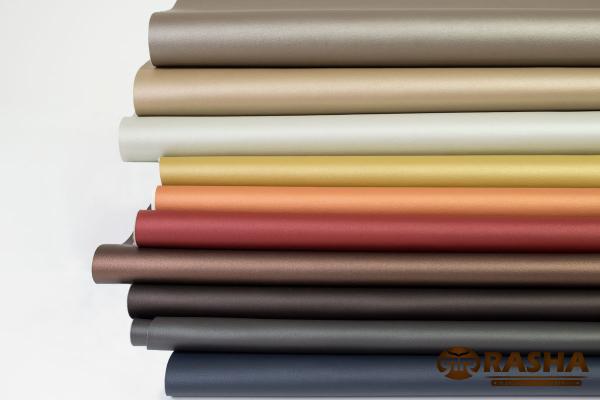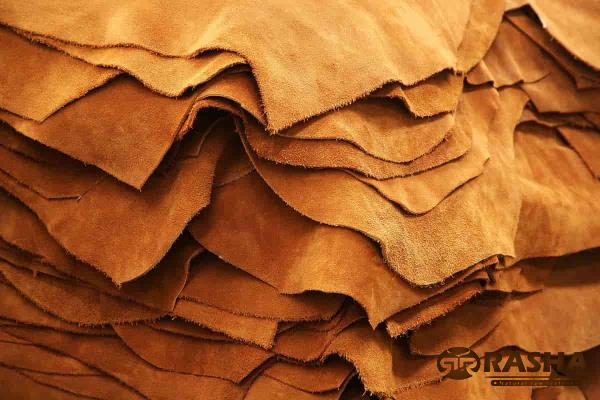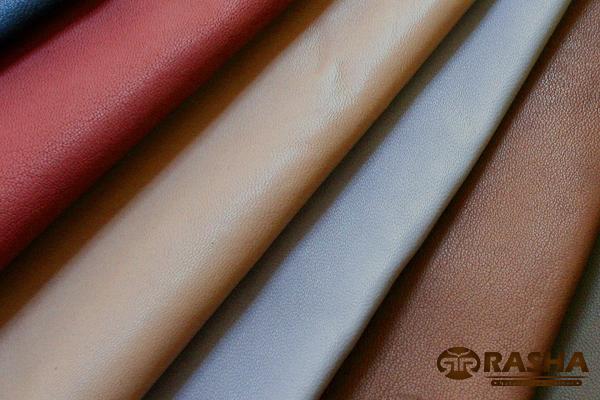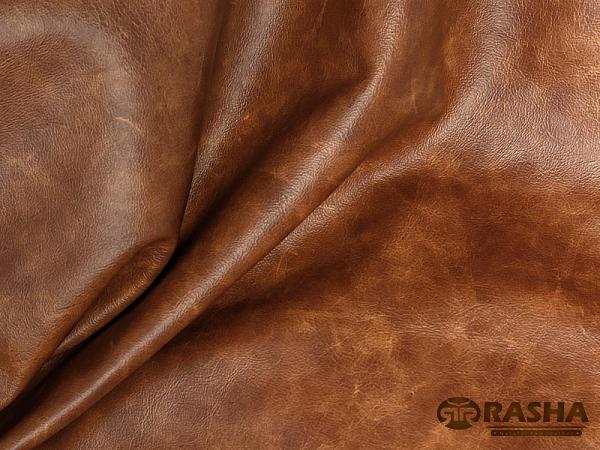Raw sheepskin leather, a natural material derived from the hides of sheep, has been prized for centuries for its exceptional durability, softness, and insulating properties. As one of the oldest and most widely used materials, sheepskin leather continues to enjoy popularity in various industries, including fashion, footwear, upholstery, and automotive sectors. This article aims to provide a comprehensive overview of raw sheepskin leather, exploring its production process, characteristics, applications, and the sustainability factors associated with its usage. 1. Production Process of Raw Sheepskin Leather: The production of raw sheepskin leather involves several intricate steps. Initially, once sheep are sheared, their hides undergo a thorough fleshing and cleaning process to remove any traces of meat, fat, and unwanted debris. The hides are then treated with chemicals to prevent putrefaction and bacterial growth. The next stage involves removing the hair and epidermis, a process called “dehairing.”

leather
 This prepares the hide for multiple treatments, including soaking, tanning, and dyeing, before the final drying and finishing processes, ensuring that the leather obtains its desired texture, color, and quality. 2. Characteristics of Raw Sheepskin Leather: Raw sheepskin leather boasts a diverse range of features that contribute to its desirability in various applications. Its natural composition offers exceptional breathability, moisture-wicking capabilities, and thermal insulation, making it an ideal material for year-round use. Sheepskin leather is also renowned for its softness, flexibility, and durability, allowing for long-lasting products that mold to the wearer’s body with time while maintaining shape and appearance. Its natural lanolin content provides additional benefits, such as moisture resistance and a soothing effect on the skin. 3. Applications of Raw Sheepskin Leather: 3.1 Fashion and Accessories: Raw sheepskin leather plays a significant role in the fashion industry, supporting the creation of luxury garments, accessories, and footwear. From luxurious coats, jackets, gloves, and hats to handbags, wallets, and shoes, designers value sheepskin leather for its aesthetic appeal, comfort, and functionality. Additionally, the natural texture and grain of the leather enhance the appeal of high-quality products, appealing to discerning customers seeking elegance, style, and durability.
This prepares the hide for multiple treatments, including soaking, tanning, and dyeing, before the final drying and finishing processes, ensuring that the leather obtains its desired texture, color, and quality. 2. Characteristics of Raw Sheepskin Leather: Raw sheepskin leather boasts a diverse range of features that contribute to its desirability in various applications. Its natural composition offers exceptional breathability, moisture-wicking capabilities, and thermal insulation, making it an ideal material for year-round use. Sheepskin leather is also renowned for its softness, flexibility, and durability, allowing for long-lasting products that mold to the wearer’s body with time while maintaining shape and appearance. Its natural lanolin content provides additional benefits, such as moisture resistance and a soothing effect on the skin. 3. Applications of Raw Sheepskin Leather: 3.1 Fashion and Accessories: Raw sheepskin leather plays a significant role in the fashion industry, supporting the creation of luxury garments, accessories, and footwear. From luxurious coats, jackets, gloves, and hats to handbags, wallets, and shoes, designers value sheepskin leather for its aesthetic appeal, comfort, and functionality. Additionally, the natural texture and grain of the leather enhance the appeal of high-quality products, appealing to discerning customers seeking elegance, style, and durability.
Specifications of leather
 3.2 Upholstery and Home Decor: Sheepskin leather is favored in the interior design and home decor sectors for its ability to add warmth, texture, and luxury to a space. Upholstered furniture, cushions, rugs, and throws made from raw sheepskin leather offer a sumptuous accent while also delivering practical benefits such as insulation and durability. They can transform any living space into a cozy and inviting environment, promoting relaxation and comfort. 3.3 Automotive Industry: In the automotive industry, raw sheepskin leather is used in the manufacturing of high-end car interiors, providing a plush, luxurious feel to seats, steering wheels, and other components. Sheepskin leather’s insulating properties help regulate temperature, ensuring passengers’ comfort, especially during extreme weather conditions. Furthermore, its durability and resistance to wear make it ideal for withstanding frequent use and reducing the need for replacements. 4. Environmental Sustainability Factors: The utilization of raw sheepskin leather aligns with several sustainability factors, making it an attractive choice for conscious consumers and businesses alike. 4.1 Biodegradability: Sheepskin leather is a natural material that biodegrades over time. Unlike synthetic alternatives, its decomposition process does not contribute to long-term environmental pollution, as it breaks down naturally and forms a part of the ecological cycle.
3.2 Upholstery and Home Decor: Sheepskin leather is favored in the interior design and home decor sectors for its ability to add warmth, texture, and luxury to a space. Upholstered furniture, cushions, rugs, and throws made from raw sheepskin leather offer a sumptuous accent while also delivering practical benefits such as insulation and durability. They can transform any living space into a cozy and inviting environment, promoting relaxation and comfort. 3.3 Automotive Industry: In the automotive industry, raw sheepskin leather is used in the manufacturing of high-end car interiors, providing a plush, luxurious feel to seats, steering wheels, and other components. Sheepskin leather’s insulating properties help regulate temperature, ensuring passengers’ comfort, especially during extreme weather conditions. Furthermore, its durability and resistance to wear make it ideal for withstanding frequent use and reducing the need for replacements. 4. Environmental Sustainability Factors: The utilization of raw sheepskin leather aligns with several sustainability factors, making it an attractive choice for conscious consumers and businesses alike. 4.1 Biodegradability: Sheepskin leather is a natural material that biodegrades over time. Unlike synthetic alternatives, its decomposition process does not contribute to long-term environmental pollution, as it breaks down naturally and forms a part of the ecological cycle.
buy leather
 4.2 Byproduct of Meat Industry: Raw sheepskin leather is primarily a byproduct of the meat industry, where sheep are reared for meat consumption. Utilizing sheep hides for leather production ensures that no part of the animal goes to waste, promoting a more sustainable and ethical approach to resource utilization. 4.3 Longevity and Durability: The durability and longevity of raw sheepskin leather products contribute to their sustainability credentials. When properly cared for, sheepskin leather items can remain functional and aesthetically pleasing for many years, reducing the demand for frequent replacements and minimizing waste. 4.4 Repurposing and Recycling: Sheepskin leather possesses the potential for repurposing and recycling. Existing leather products can be transformed into new items, extending their lifespan and reducing the need for additional raw materials. This approach aligns with the principles of circular economy and minimizes waste generation. Conclusion: Raw sheepskin leather’s versatility, durability, and sustainability aspects make it a valuable material across various industries. Its unique characteristics, combined with its natural origins, contribute to its popularity in the fashion, footwear, upholstery, and automotive sectors. By utilizing raw sheepskin leather, businesses can not only offer high-quality products but also promote environmental sustainability through biodegradability, responsible resource utilization, and product longevity.
4.2 Byproduct of Meat Industry: Raw sheepskin leather is primarily a byproduct of the meat industry, where sheep are reared for meat consumption. Utilizing sheep hides for leather production ensures that no part of the animal goes to waste, promoting a more sustainable and ethical approach to resource utilization. 4.3 Longevity and Durability: The durability and longevity of raw sheepskin leather products contribute to their sustainability credentials. When properly cared for, sheepskin leather items can remain functional and aesthetically pleasing for many years, reducing the demand for frequent replacements and minimizing waste. 4.4 Repurposing and Recycling: Sheepskin leather possesses the potential for repurposing and recycling. Existing leather products can be transformed into new items, extending their lifespan and reducing the need for additional raw materials. This approach aligns with the principles of circular economy and minimizes waste generation. Conclusion: Raw sheepskin leather’s versatility, durability, and sustainability aspects make it a valuable material across various industries. Its unique characteristics, combined with its natural origins, contribute to its popularity in the fashion, footwear, upholstery, and automotive sectors. By utilizing raw sheepskin leather, businesses can not only offer high-quality products but also promote environmental sustainability through biodegradability, responsible resource utilization, and product longevity.










Your comment submitted.